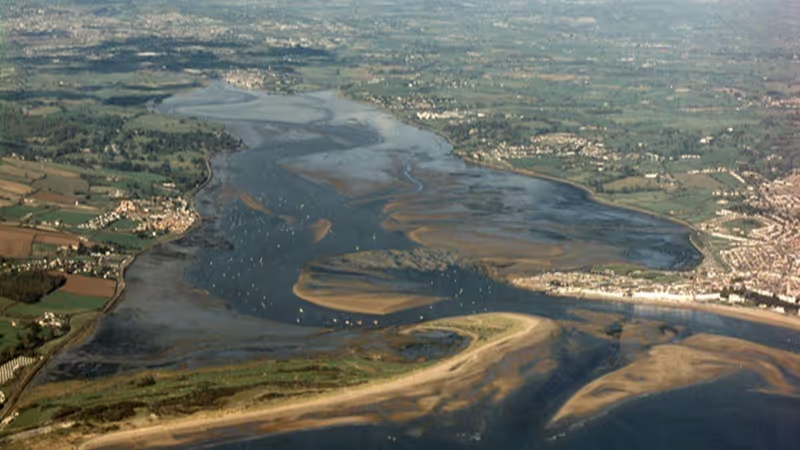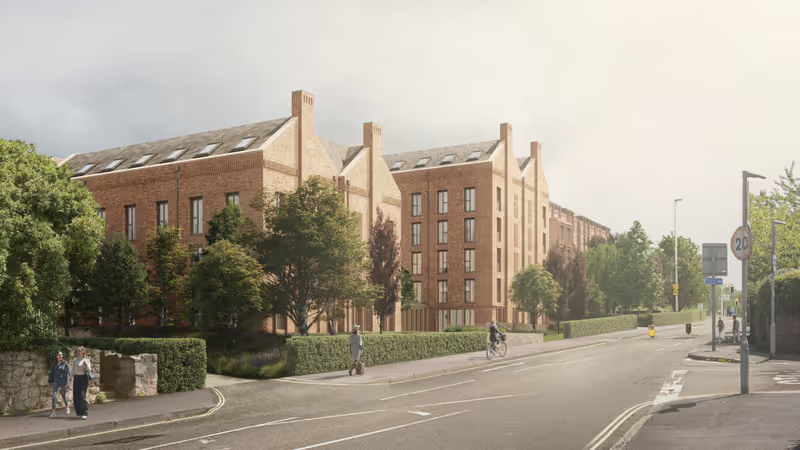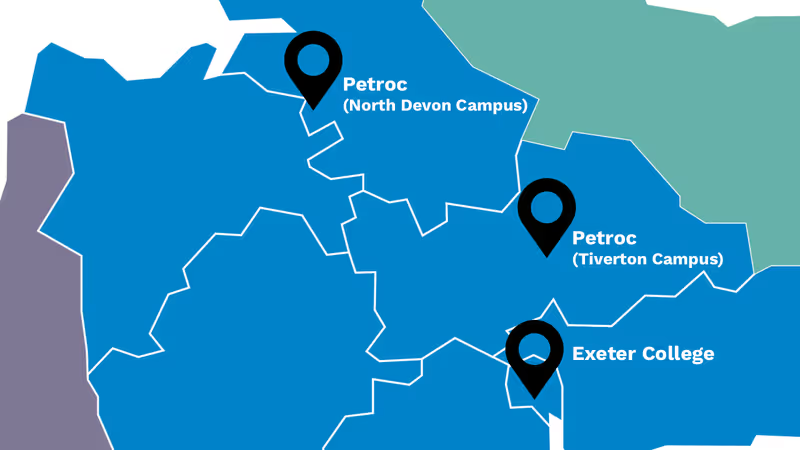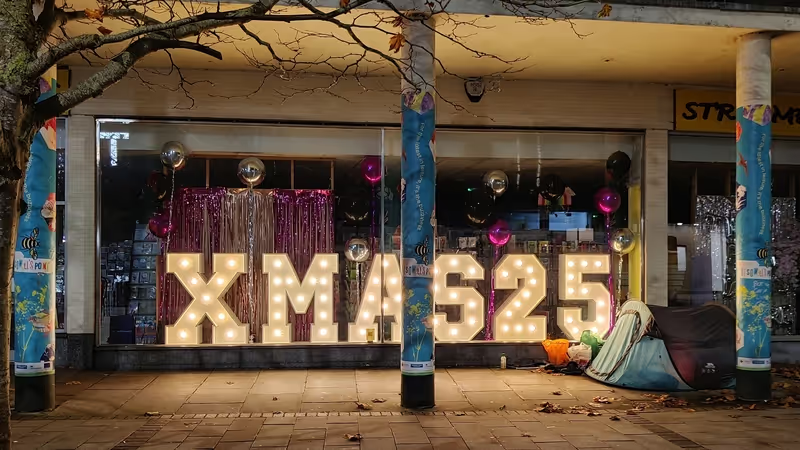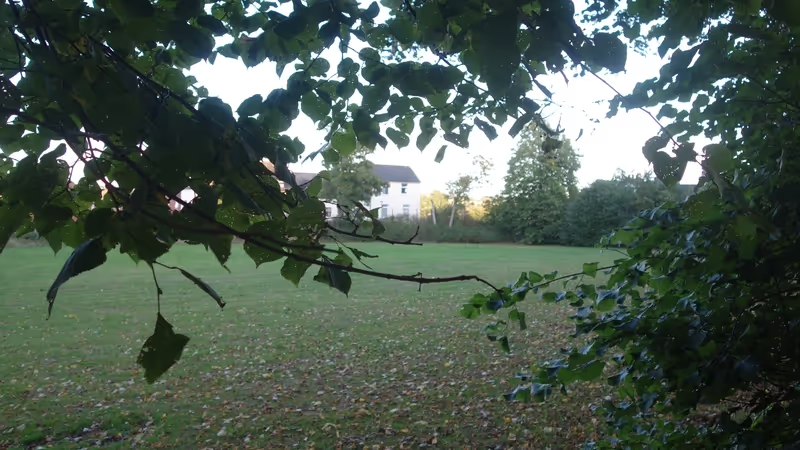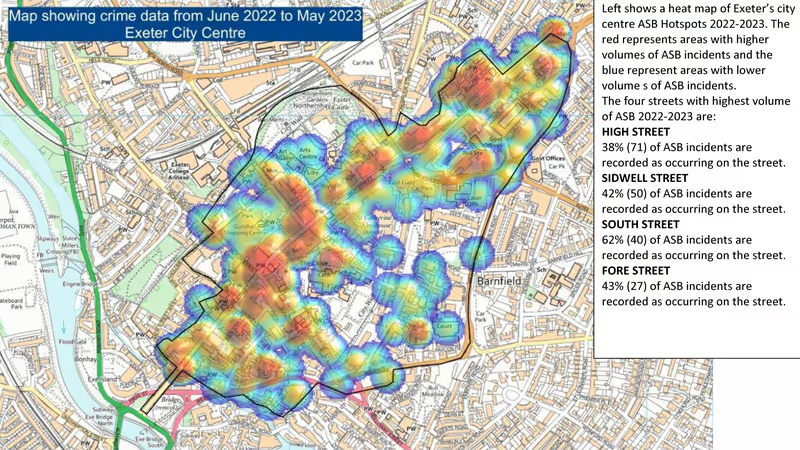Exeter City Council has approved a planning application for a second co-living block as part of the Harlequins shopping centre redevelopment, replacing the hotel that was agreed last October despite vehement opposition from residents, campaigners and conservation charities.
The scheme’s developer had secured permission to build a 251-bed co-living block and a 116-bed hotel on the site, subject to planning conditions which were met by the end of April this year.
However it then submitted a revised application to return to an earlier, rejected, vision for the 1.04 hectare site, replacing the hotel with a second co-living block to build 383 co-living bedspaces along the length of Paul Street.
The developer claimed the impact of coronavirus since its November 2019 planning application justified the scheme’s reversion to wholesale co-living. But the scheme was twice substantially revised after the application was submitted, first in May 2020, two months after the pandemic arrived in the UK, and again in July. The hotel remained a fixture throughout.
The application was not decided until the end of October last year, by which time the second wave of the pandemic was well under way. Jones Lang LaSalle, the applicant’s agent, continued to extol the benefits of the hotel in a letter sent to the council on the day its planning committee met.
The council’s approval of the previous scheme then became a material consideration in the revised application, tilting this week’s decision in favour of approval.
 Harlequins revised redevelopment scheme - block two model view of Paul Street elevation.
Harlequins revised redevelopment scheme - block two model view of Paul Street elevation.
Image: Corsorphine & Wright
Monday’s planning committee meeting, at which the application for the revised scheme was approved, considered a report and presentation prepared by the same city council planning officer who dealt with the previous scheme.
Various claims about the economic, social and environmental benefits of the development were given significant weighting in the original decision, and many have been retained. But the effect of replacing the hotel with a co-living block necessitated a new economic impact assessment.
This estimates that the revised development “could support” a net total of 36 new jobs in the local economy. This is 20 fewer than the previous plans, but the planning officer was unable to confirm this when asked by committee members as he couldn’t recall the content of his previous report despite revisiting much of its content in the revised report.
The new economic impact assessment says that the development’s value has shrunk by 17%, but there was no mention of this change in the planning officer’s report and nothing was said about it during the committee meeting either.
The difference is worth £1.5 million to Exeter’s economy every year, two and half times all the one-off developer contributions required to mitigate the impact of the development put together.
The planning officer’s report nevertheless contained some striking statements, including a description of the development’s gas-fired heating system as “renewable”. It also called the development “car free” — except for the two disabled spaces, two electric vehicle spaces, nine other car parking spaces and two service lay-bys for delivery vehicles and residents’ drop-off-pick-up parking that it provides.
It did not, however, mention the carbon footprint of demolition and redevelopment using construction materials with very high levels of embodied energy.
Council leader Phil Bialyk, who sits on the planning committee despite national Planning Advisory Service guidance to the contrary, praised what he said were the development’s high environmental standards. He said: “For all those people, including me, who are concerned about the environment, just think about that impact.”
Student accommodation by the back door?
The scheme’s developer Curlew is responsible for nearly 10,000 UK student beds.
It is a privately-owned, non-listed development and investment management company that specialises in student accommodation and build to rent in the UK and the Netherlands.
It is part of a complex group of companies of which at least 73 are registered off-shore in Guernsey.
One of the company’s senior development managers, who joined it in April 2020, was previously responsible for the development of controversial 360-bed student blocks behind Exeter City Football Club’s ground at St James Park and another 150 beds at Exeter Cricket Club’s ground on Prince of Wales Road.
They were developed by Yelverton Properties, itself part of a complex group of companies and responsible for a 500+ bed student block on Western Way.
The revised Harlequins scheme is described as “very similar” to the previously approved plans. The additional co-living block will be “marginally” less tall than the previously approved hotel, and the internal layouts of both blocks have been altered, with slight increases in room sizes and shared communal space.
According to the planning application amenity space has been increased by 35 square centimetres per room to an average of 3.19 square metres for each of the 383 bedspaces. This is described in the council planning case officer’s report as “generous levels of communal amenity space”.
In the revised plans “cluster rooms” (bedrooms in multi-occupancy flats which share a kitchen) will be “approximately” 1m2 larger, so typically 13.5m2, and most of the studios (which include kitchens and toilet/shower rooms) will be just over 18m2. This is less than half the 37m2 minimum national space standard for a one person dwelling (when it has a shower instead of a bath).
The revised plans greatly increase the proportion of studios to cluster flat bedspaces. The co-living block which was approved in October was to include 99 studios and 26 cluster flats containing a total of 152 bedspaces.
The revised scheme reconfigures that block to provide 138 studios and 18 cluster flats containing a total of 107 bedspaces, and adds another 133 studios in the block which has replaced the hotel. 72% of the rooms in the new scheme are studios, nearly double the share in the previous scheme. A further five studios will be provided in the upper floors of 21-22 Queen Street.
The developer cited the “high density mixed use development” envisaged by the city council’s “Liveable Exeter” property development scheme in support of these arrangements, while council leader Phil Bialyk cited what he apparently considers to be a benefit of living spaces that do not meet minimum space standards, saying: “Your house is too big, you’re using too much carbon”.
 Harlequins revised redevelopment scheme - heritage assets plan. Image: Exeter City Council.
Harlequins revised redevelopment scheme - heritage assets plan. Image: Exeter City Council.
When the council approved the previous Harlequins redevelopment scheme last year, a coalition of local residents and campaigners, conservation charities and community groups including Exeter Civic Society, Devon Archeological Society and Devon Buildings Group, backed by The Victorian Society and The Georgian Group, unsuccessfully appealed to the Secretary of State to call in the decision.
Their objections concerned a wide range of factors, in particular the impact on nearby heritage assets that the development would cause. These include the historic city wall that borders the site as well as numerous nearby grade I, II*, II and locally-listed buildings.
The council’s conclusion that the cumulative level of harm to these heritage assets was “less than substantial”, as well as the methods that were employed to derive it, were strongly criticised by heritage experts and charities including The Georgian Group and The Victorian Society.
This conclusion has not changed, nor has the development’s reduced economic value affected the council’s view that the harm the development will cause to heritage assets is sufficient to outweigh the purported benefits of the scheme.
It was also widely assumed that despite the developer’s claim that the scheme will be used for co-living, it is likely to be occupied largely by students. Liberal Democrat councillor Michael Mitchell, who is a member of the council planning committee, said that the previous scheme’s co-living block “appears to be, in all but name, more student accommodation”.
Keith Lewis of Exeter Civic Society also said: “The co-living accommodation appears to be exactly the same as that presented at consultation earlier in 2019 for student accommodation”.
 Harlequins revised redevelopment scheme - block plan. Image: Corsorphine & Wright
Harlequins revised redevelopment scheme - block plan. Image: Corsorphine & Wright
When Michael Mitchell sought to ask the developer’s agent, who spoke at Monday’s meeting, what proportion of the Harlequins tenants were expected to be university students, Labour councillor Emma Morse, who is Executive city development portfolio holder and planning committee chair, also despite national guidance intended to ensure that planning decisions are taken in a “fair, impartial and transparent way”, intervened to prevent him doing so.
The developer’s agent did, however, confirm that the “affordable private rented” units which will be included in the development will cost a maximum of 80% of the rate paid for purpose built student accommodation in Exeter, currently between £950 and £1340 per month. He went on to say that if these units proved unaffordable to the key workers for whom they are intended, the situation would be “subject to negotiation with the local authority”.
Despite the lack of council or association housing in the Harlequins plans, Councillor Ruth Williams, a Labour Executive member who is also the planning committee’s deputy chair, mentioned the 2,200 people on the Devon Home Choice waiting list, saying the development would make a “significant difference to addressing the shortage of accommodation in Exeter”.
As Exeter City Council will only accept applicants for this list if they meet very strict criteria which include being homeless, having specific health needs or needing to escape violence, and Devon Home Choice only offers council or housing association homes, it is not clear how the Harlequins development might supply the accommodation they need.
Labour councillor Rob Hannaford then sought to clarify the expected tenancy length on which the development’s operational plan was based, voicing concerns about potential mental health risks for co-living tenants. He said that while compromising on space or amenity standards might be reasonable in purpose built student accommodation because students only occupy it for short periods, co-living tenants might stay in situ much longer.
Councillor Morse intervened again, exhorting the committee to ask “planning-related” and not what she called “predicting the future” questions, saying she wasn’t only having “a dig” at Councillor Hannaford in doing so.
As the application to redevelop Harlequins largely concerns demolition, construction and subsequent use, and planning permission is conditional on operational agreements which address the building management issues raised by Councillors Mitchell and Hannaford, and which were before the committee for consideration, it is unclear why this distinction was drawn.
At the time of last year’s planning decision Diana Moore, Green Party councillor for St David’s ward, which includes the Harlequins site, described the co-living plans as “warehousing for people”. This week she said she was “dismayed” by the decision to approve the revised application, describing the development as “abysmal”.
She said: “It became very clear from the answers the developer gave to my questions that this co-living project is poorly thought through.
“Far from meeting local planning requirements to provide mixed developments, vital in an area that already has a high transient population, it will instead provide ‘units of accommodation’ for single people, not the long term homes that our key workers deserve.”
